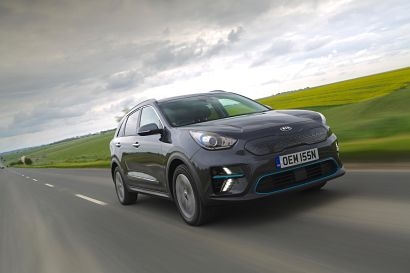
Plan S encompasses electrification and mobility services, as well as connectivity and autonomy. It outlines Kia’s pre-emptive and enterprising ‘shift’ from a business system focused on internal combustion engine vehicles toward one centred on electric vehicles and customised mobility solutions. The company’s ongoing brand innovation and profitability enhancement will support the two-track Plan S strategy targeting the shift toward electric and autonomous vehicles as well as mobility services.
Alongside Kia’s 2025 financial and investment strategy, details of Plan S were announced to shareholders, analysts and credit-rating agencies at the company’s CEO Investor Day in Seoul today.
By the end of 2025, Kia plans to offer a full line-up of 11 battery electric vehicles. With these models Kia is looking to achieve a 6.6 per cent share of the global EV market (excluding China), while also attaining a 25 per cent share of its sales from its eco-friendly cars. With the global EV market expected to gain strength by 2026, Kia is aiming for 500,000 annual EV sales and global sales of 1 million eco-friendly vehicles (excluding China).
Alongside these objectives, Kia will offer EV-based mobility services as part of its new business model, helping solve global urban problems such as environmental pollution. In the Purpose Built Vehicle (PBV) market, anticipated to grow on the back of expanding car-sharing and e-commerce businesses, the company will secure leading-edge competitiveness.
Plan S will see Kia Motors invest a total of 29 trillion won ($25 billion) by the end of 2025 to establish leadership in vehicle electrification and diversify its business. By the end of this period, Kia Motors is targeting a six per cent operating profit margin and 10.6 per cent return on equity (ROE) ratio to secure the necessary capital and maximise shareholder value.
“As the auto industry undergoes turbulent changes, today is also an opportune time for Kia Motors to radically transform itself into a global enterprise dedicated to spearheading customer value-led innovations” said Kia Motors President and CEO Han-woo Park. “Kia Motors will actively innovate to take on the challenges ahead, identifying and capitalising on new opportunities to propel the company forward. Plan S is a bold and enterprising roadmap for Kia’s future business transition, buttressed by the two pillars of electric vehicles and mobility solutions. Our approach is to put customers first, and Kia will reinvigorate its brand innovation by developing products and services that offer new experiences for customers.”
As the two strategic objectives of Plan S, Kia will concentrate on (1) leading the popularisation of electric vehicles, and (2) expanding mobility services for electric and autonomous vehicles, as well as entering the PBV business.
Kia will focus on securing its leadership in the global EV market by adopting a strategy of product differentiation, such as launching a dedicated EV model, as well as by establishing a company-wide innovation system. The company is planning to lay the ground for its great leap forward by transitioning to an EV-based business system ahead of competitors, utilising its production capabilities in manufacturing internal combustion engine vehicles.
Starting with the launch of its maiden dedicated EV model in 2021, Kia will establish a full EV line-up of 11 models by 2025, adding new EV models to its whole line-up along the way, including passenger vehicles, SUVs and MPVs from 2022.
The dedicated EV model to be launched in 2021 will be built on a unique platform specifically engineered to accommodate the car’s EV powertrain and technologies. It will offer a single-charge driving range of over 500 kilometers, and sub-20-minute high-speed charging time. Across its EV line-up, Kia plans to operate two different types of EVs with different charging capabilities (400V/800V) -- high-performance dedicated models and derivative models with reasonable pricing - to meet the diverse needs of customers.
Growth in global EV sales will be pursued in accordance with a customised, market-oriented strategy, which considers regional differences in environmental regulation, subsidies, infrastructure and more.
For additional information:

